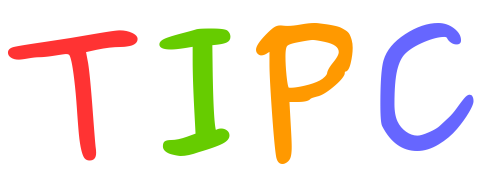

Tumor-Immune Partitioning and Clustering
|
 |
|
 |
|
 |
|
 |
|
 |
|
 |
|
 |
|
TIPC is a computational method that utilizes hexagonal tessellation and a classifier that evaluates multiple spatial parameters against a tumor region-specific null model representing a state of neutral tumor-immune cell interactions. Figure 1 depicts the key components of a TIPC analysis using an example multiplexed immunofluorescence (mIF) image. The TIPC R package is available on the web https://github.com/MPE-Lab/TIPC. |
|
|

|
|
Figure 1. Implementation of TIPC, a computational method utilizing hexagonal tessellation and a classifier that evaluates multiple spatial parameters against a tumor region-specific null model represented by two global ratios based on the total number of immune (user-selected cell type of interest), tumor (global I:T) and stromal cells (global I:S). Using the Cartesian coordinates of these cells, TIPC divides the space into a hexagonal grid of subregions of specified subregion size and calculates two local ratios namely I:T and I:S for each subregion. The subregions are then classified into six different categories based on comparing the local to the global I:T and I:S ratios. In this mIF-stained image example, there were 19 “Tumor only” subregions containing only tumor cells; 25 “I:T low” subregions with a local I:T ratio less than the global I:T ratio; and 31 “I:T high” subregions with a local I:T ratio greater than the global I:T ratio. The three stromal categories were counted in a similar way. The number of subregions in each category is then normalized using the total number of subregions containing cells of any type. The resultant six-element numerical vector encodes the tumor-immune spatial organization of the TME for an ROI. Abbreviations: I:T, immune-to-tumor, I:S, immune-to-stroma. In a region of interest (ROI), the locations of individual tumor cells, stromal cells and an immune cell type of interest need to be represented using Cartesian coordinates. Using these input data, TIPC divides the ROI into a hexagonal grid of subregions of the specified subregion size, and calculates two global ratios, i.e., total number of immune-to-total number of tumor cells and total number of immune-to-total number of stromal cells, together representing a state of neutral tumor-immune cell interactions which is the null model. The subregions are subsequently classified into six different categories, namely tumor-only, immune-to-tumor low (I:T low), immune-to-tumor high (I:T high), stroma-only, immune-to-stroma low (I:S low), and immune-to-stroma high (I:S high), based on comparing the immune, tumor and stromal cell content of each subregion to the global I:T and I:S ratios. The number of subregions in each category is then normalized using the total number of subregions containing cells of any type. The resultant six-element numerical vector, called TIPC spatial parameters, encodes the tumor-immune spatial organization of the tumor microenvironment (TME) for an ROI. The six-element numerical vectors of multiple tumors can be readily compared, for instance using a Pearson correlation distance, enabling spatial pattern discovery across a cohort. TIPC employs an unsupervised hierarchical clustering algorithm to group tumors with similar immune spatial organization as encoded by TIPC measures into unique subtypes. |
|
|

|
|
Figure 2. Evaluation of effect of subregion size on TIPC spatial parameter value distribution, using CD3+ T-cells in 931 CRC samples. Two representative ROIs demonstrating different subregion sizes in (a) a stromal region and (b) a tumor region predominating CRC tissue sections. (c) Distribution of TIPC spatial parameter values (in normalized counts) across a range of subregion sizes i.e., 20-55 µm. Subregion sizes smaller than 30 µm demonstrated an underrepresented I:T low measure . An optimal choice of subregion size and number of clusters depends on the cancer types and immune cell of interest under study. TIPC web server generates various diagnostic plots to help users to determine the optimal subregion size and number of clusters (Figure 2-3). As a rule of thumb, an optimal subregion size balances the degree of resolution for immune cell partitioning between tumor epithelial and stromal areas against the probability of generating an excess of uninformative subregions that do not contain immune cells. Whereas an optimal cluster number generates stable and robust spatial patterns from a cohort of tumors. TIPC employs an empiric approach that jointly tests cluster number and subregion size to minimize selection bias and provide information about the robustness of any given TIPC clustering solution. TIPC web server also incorporates survival association test using the function postTIPC_SurvivalAnalysis. |
|
|

|
|
Figure 3. Determination of optimal subregion size and input cluster number (k) for TIPC analysis using CD3+ T cells in 931 CRC samples. At individual subregion sizes of (a-c) 30, (d-f) 35, and (g-i) 40 µm, (a,d,g) CDF delta plots were first used to determine the minimum k for stable clustering (colored in red); (b,e,h) tracking plots revealed the relationship between granularity (high k yields high granularity) and cluster size (optimal k, marked by black boxes, were selected manually for ensuring a balance between granularity and statistical power). After excluding clusters comprising less than 30 tumors, (c,f,i) the major clusters with their spatial patterns represented by the six TIPC parameters were shown in the heat maps. Subregion sizes 30 and 35 µm yielded six largely similar patterns whereas the HC cluster was missing from subregion size of 40 µm. Abbreviations, CSR = cold, stroma-rich, CTR = cold, tumor-rich, HD = hot and disperse, HTCC = hot, tumor-centric clustering, HSCC = hot, stroma-centric clustering, HC = hot and clustered. |